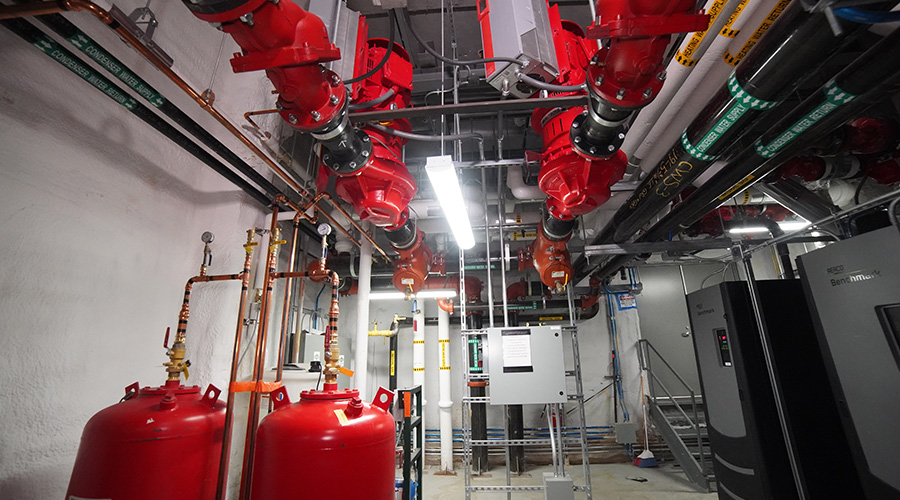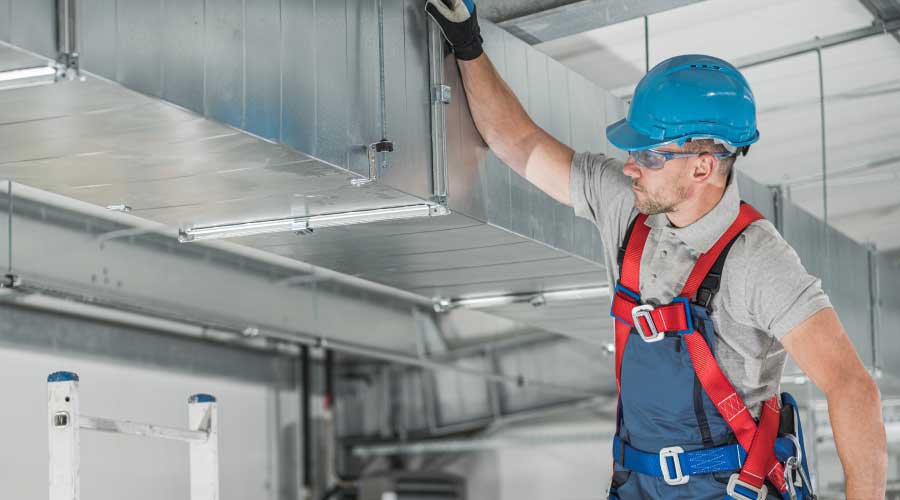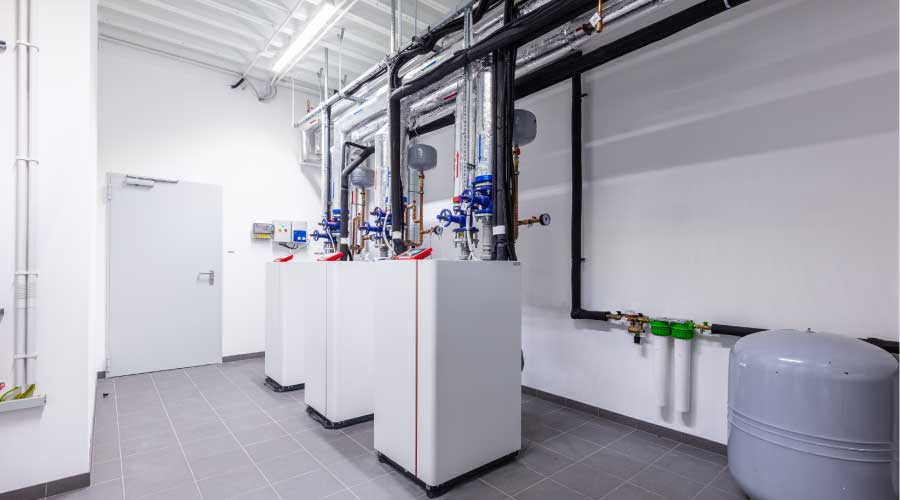HVAC Maintenance and Energy Savings
In spite of years of studies, demonstration programs, and published stories to the contrary, most facility organizations today still operate in a reactive mode. Though facility executives know that is far better to schedule maintenance activities using planned and predictive maintenance tools, most continue to spend the bulk of their resources operating reactively. The most common reasons cited for this is the lack of sufficient resources.
This approach to maintenance with respect to HVAC systems is particularly troubling given the role that HVAC systems play in today’s facilities. HVAC systems in typical commercial buildings are responsible for more than 40 percent of total energy use. Keeping HVAC systems running properly and at peak efficiency is the first step in managing facility energy use.
The importance of good HVAC system maintenance goes beyond just controlling energy use. Buildings today depend on properly operating systems for more than just people comfort. For example, most telecommunications systems have requirements for specific environmental conditions to operate properly. Temperatures and humidity levels that fall outside of this range can lead to interruption in services and even costly system failures. Sometimes the difference between keeping a business running and having to shut down is nothing more than proper HVAC system maintenance.
What Goes Wrong
In spite of all the supporting data and facility executives’ efforts, most organizations underfund maintenance. Reactive maintenance remains the norm, not the exception. Maintenance is deferred. Planned and predictive maintenance remain the exception. The most commonly cited reason for not performing routine and preventive maintenance on HVAC equipment is lack of resources. The C-suite rarely has facility experience and does not fully understand the need for maintenance. To many who establish and control budgets, maintenance is an overhead cost. Like other overhead costs, steps should be taken to reduce it. Reducing overhead costs increases profit margins. And like other overhead costs, the only impact of this reduction is reduced costs. Proper maintenance of HVAC systems requires careful planning and forward thinking, both of which become lost when maintenance is considered nothing more than an overhead expense.
Contributing to this belief is the unfortunate fact that HVAC systems are not the most noticeable components in a facility. Unlike highly visible items, such as carpet or lighting systems, most HVAC systems are out of sight and out of mind, until something goes wrong. And when something does go wrong, it is too late for maintenance to be performed efficiently. Maintenance at that point becomes reactive.
Reactive maintenance is the most costly way to maintain building HVAC systems. Organizations that have implemented comprehensive planned and predictive maintenance programs show dramatic decreases in maintenance costs. And when factors are included, such as extended equipment life, reduced energy use, less frequent system downtime, and decreased interruptions to building operations, organizations that have implemented comprehensive maintenance programs find that their total costs can be as much as 50 percent lower than the costs for those organizations that continue maintain equipment reactively.
While it is easy to blame those who control the budget, facility executives themselves are at least partially to blame. If facility executives are to receive the budgetary support necessary to carry out their mission, they must present their case in the terms that are best understood by budget managers. Simply saying that money is needed to overhaul or replace a chiller, particularly when the chiller is still running, is not enough. Facility executives should be able to demonstrate the consequences of ignoring HVAC system maintenance while identifying the real cost savings associated with comprehensive maintenance. Demonstrate that dollars spent on the maintenance of these systems will result in an improvement in the bottom line.
Location, location, location. The phrase is a real estate cliché. In maintenance budgeting, the key is documentation, documentation, documentation. Funds in organizations, particularly during economic downturns, are limited. Competition for those funds is intense. Other departments have pet projects that they are promoting. They are the competition. If facility executives want to level the playing field, they should make the case that investing money in HVAC maintenance will provide the organization a rate of return that is equal to or even greater than what others are promoting. And that requires documentation.
Properly maintaining HVAC systems provides a number of benefits that facility executives readily understand. Proper documentation of these benefits will help budget managers develop the same level of understanding.
Energy Savings
One of the easiest benefits to document is how HVAC maintenance affects energy efficiency. Facilities in which proper HVAC maintenance is completed will use at least 15 to 20 percent less energy than those where systems are allowed to deteriorate.
For example, consider the operation of a central building chiller. Building chillers typically are the single largest user of electricity in a facility. To keep them operating as efficiently as possible, maintenance tasks must be performed on a daily, weekly, monthly and annual basis. Let them lapse, and efficiency will decrease, increasing energy use.
Start with the chiller operating log. Work with the chiller manufacturer or a service company to translate the log data into an operating efficiency curve for the chiller. Develop a similar curve for what the efficiency of the chiller would be if all maintenance were performed at the recommended intervals. The difference between the two operating efficiencies can be translated into energy and cost savings. Due to the high energy use of the equipment, even small increases in efficiency will result in large savings.
While the energy savings estimates for chillers, boilers, and many other HVAC systems is straightforward, others savings estimates may not be. Consider outside air dampers. Air dampers require regular maintenance to respond properly to the temperature control system’s demand for ventilation air. If the damper linkage is out of adjustment, or if it sticks open, more ventilation air will be introduced than necessary, requiring the system to use more heating or cooling energy to condition that air.
Regular inspection, testing and maintenance of the damper will keep it operating properly, minimizing energy use. Document what needs to be done, how much it will cost, and what the cost would be for a stuck damper. Show how much a stuck open damper would cost in terms of energy use.
Related Topics:














